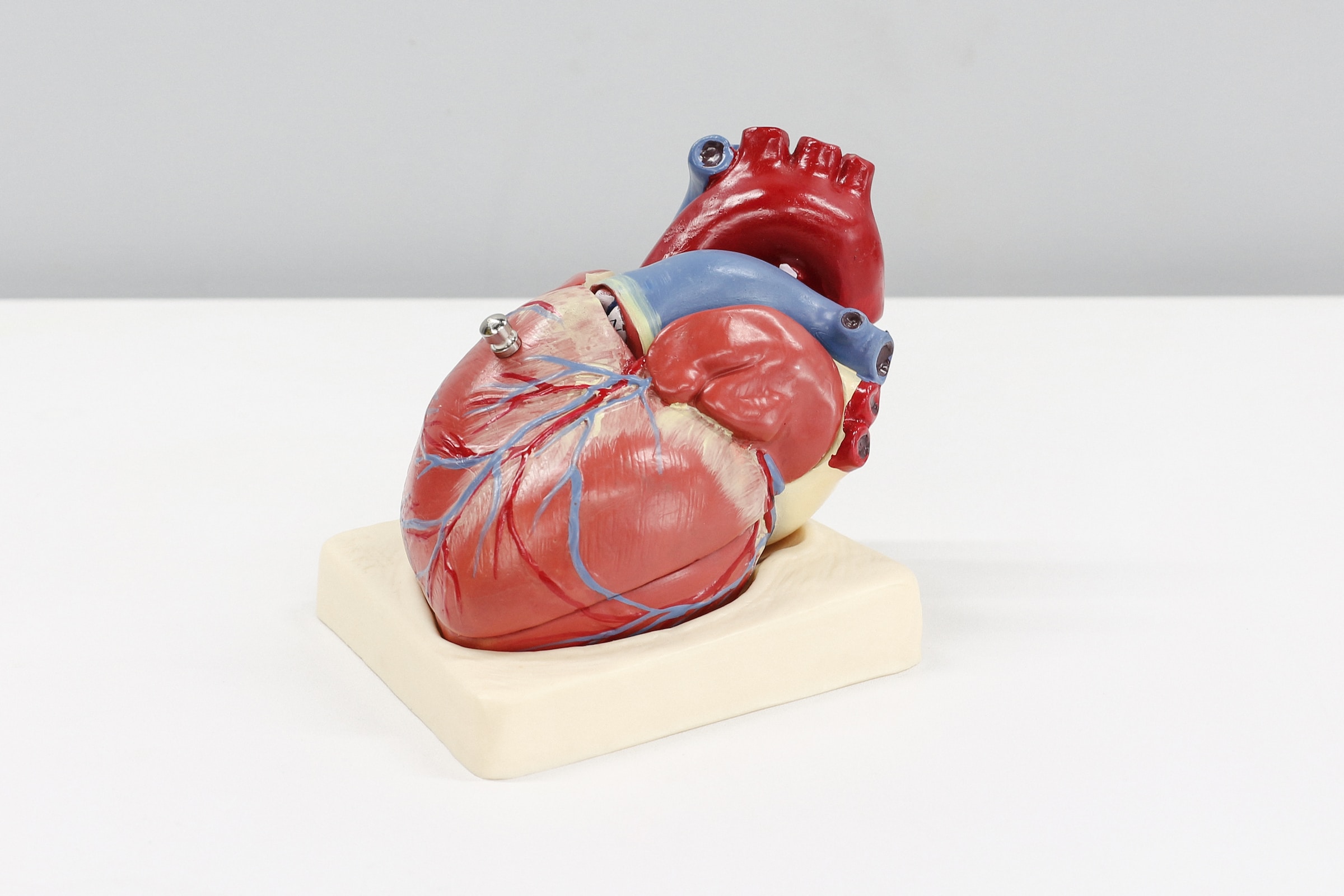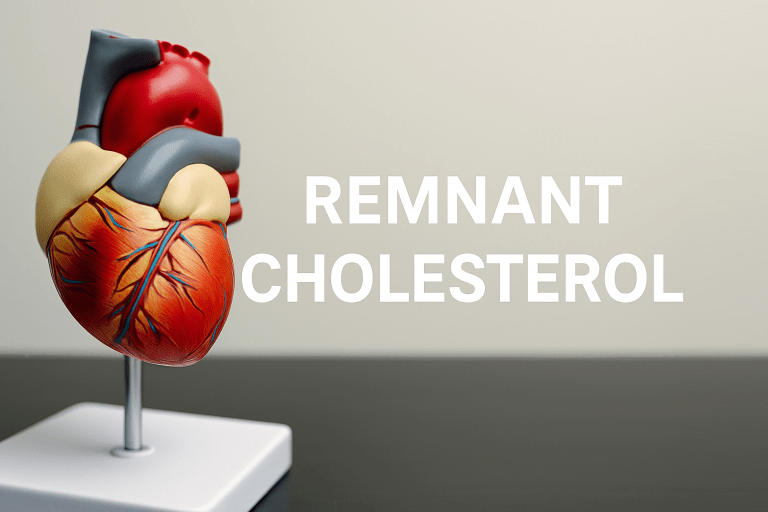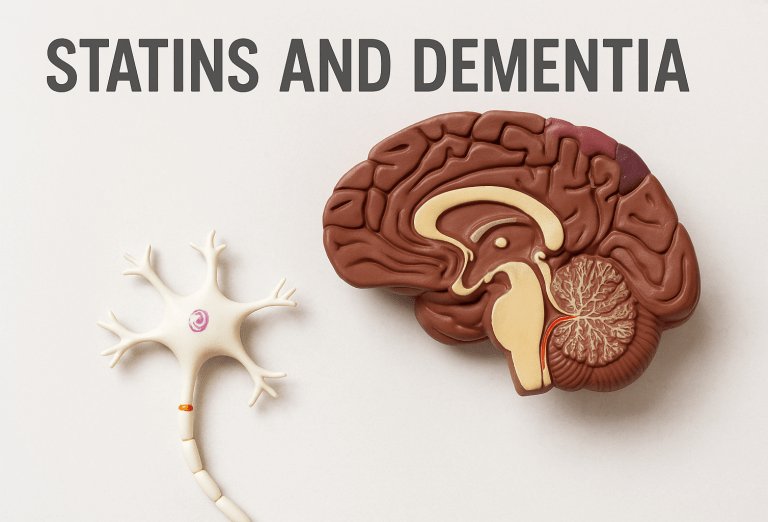The Residual Risk of Death and Disease Among Individuals With Low Levels of LDL-C and ApoB
Introduction
Cardiovascular disease is the number one cause of death among adult men and women throughout the world. Meanwhile, a key risk factor of cardiovascular disease is elevated levels of low-density lipoprotein (LDL). As a result, a significant priority among healthcare professionals and health-conscious individuals is the aggressive reduction of LDL-C levels. This has become increasingly relevant with the variety of cholesterol lowering drugs currently available, and the effectiveness of these treatments.
Importantly, however, there are several noteworthy limitations of lowering LDL-C, and by extension, Apolipoprotein B (ApoB). The intention of this perspective is to provide broader context and understanding of LDL-C/ApoB as one of many modifiable risk factors regarding atherosclerotic cardiovascular diseases (ASCVD). Notably, there are several additional risk factors that appear to be stronger predictors of ASCVD than that of LDL/ApoB. Furthermore, many of these additional risk factors are also associated with diseases other than ASCVD, in contrast to that of LDL-C/ApoB, which are primarily recognized as risk factors of ASCVD alone.
Notify Me of New Content
Provide your email address to receive notifications of new blog posts and podcast episodes.
Disclaimer
This content is for general educational purposes only and does not represent medical advice or the practice of medicine. Furthermore, no patient relationship is formed. Please discuss with your healthcare provider before making any dietary, lifestyle, or medication changes.
Content Summary
The Benefits and Limitations of Aggressive LDL-C Lowering
Among individuals at risk of cardiovascular disease, elevated LDL-C and ApoB are recognized as causal risk factors for ASCVD. Additionally, the reduction of LDL-C/ApoB with lipid lowering therapy, primarily through statin therapy has resulted in reduced rates of cardiovascular events and cardiovascular mortality. With new and emerging classes of lipid lowering therapy (Ezetimibe, PCSK9 inhibitors, Bempedoic acid, Inclisiran, etc), meaningful improvements in the ability to achieve progressively lower levels of LDL-C has been achieved. Notably, with lower levels of LDL-C, further reductions in ASCVD have been demonstrated. Meanwhile, very low levels of LDL-C and ApoB have not eliminated the risk of ASCVD. To demonstrate this, the results of several landmark clinical trials will be reviewed.
Intensive Lipid Lowering with High-Dose Atorvastatin
In a large clinical trial evaluating the effectiveness and safety of varying doses in statin therapy, more than 10,000 patients with known coronary atherosclerosis were randomized to receive either 10mg or 80mg of Atorvastatin.1 After follow-up of nearly 5 years, average LDL-C levels were 101 mg/dL for patients receiving 10mg of Atorvastatin, and 77mg/dL for patients receiving 80 mg of Atorvastatin. Heart attack, stroke, or cardiovascular death occurred in 10.9% of patients receiving low-dose Atorvastatin, and 8.7% of patients receiving high-dose Atorvastatin. There was no difference in overall life expectancy between the two groups.
| Atorvastatin | Average LDL-C Achieved | Heart Attack, Stroke, or Cardiovascular Death | Lifespan Improved |
| 80mg | 77 mg/dL | 10.9% | – |
| 10mg | 101 mg/dL | 8.7% | No |
Intensive Lipid Lowering Ezetimibe Added to Statin Therapy
To test the effectiveness of a non-statin therapy, a trial enrolled more than 18,000 patients who were randomized to receive Simvastatin and Ezetimibe or Simvastatin and placebo.2 After an average follow-up of 7-years, an average LDL-C level of 53.7 mg/dL was achieved in the Simvastatin–Ezetimibe group, as compared with 69.5 mg/dL in the Simvastatin–placebo group. Heart attack, stroke, or cardiac death occurred in 32.7% in the Simvastatin–Ezetimibe group, as compared with 34.7% in the Simvastatin–placebo group. There was no difference in overall life expectancy or cardiovascular mortality.
| Average LDL-C Achieved | Heart Attack, Stroke, Cardiac Death or Event | Lifespan Improved | |
| Simvastatin + Placebo | 69.5 mg/dL | 34.7% | – |
| Simvastatin + Ezetimibe | 53.7 mg/dL | 32.7% | No |
Intensive Lipid Lowering With PCSK9-Inhibitor Added to Statin Therapy
With the emergence of PCSK9-inhibitor therapies, a separate trial enrolled more than 27,000 patients with cardiovascular disease to receive either Evolocumab and statin, or statin therapy and placebo.3 At the end of the trial, an average LDL-C of 30 mg/dL was achieved in the Evolocumab-statin group, and 92 mg/dL in the statin-placebo group. Heart attack, stroke, or cardiovascular death occurred in 9.8% of patients receiving Evolocumab and statin, and 11.3% receiving statin therapy and placebo. Again, there was no difference in overall life expectancy or cardiovascular mortality.
| Average LDL-C Achieved | Heart Attack, Stroke, Cardiac Death or Event | Lifespan Improved | |
| Statin + Placebo | 92 mg/dL | 11.3% | – |
| Statin + Evolocumab | 30 mg/dL | 9.8% | No |
Residual Risk of ASCVD With Optimal Levels of LDL-C
As demonstrated above, achieving very low levels of LDL-C reduces cardiovascular events such as heart attack and stroke. Importantly, however, significant residual risk of ASCVD exists even among those with optimal levels of LDL-C as low as 30 mg/dL. In other words, the risk of cardiovascular disease is not eliminated with very low levels of LDL-C, highlighting the risk associated with non-LDL-C and ApoB risk factors.
Moreover, among the patients tested in these three separate trials, the use of high-dose Atorvastatin, Ezetimibe, and Evolovumab failed to improve lifespan. It can, however, be argued that healthspan was improved as a result of fewer cardiovascular events and hospitalization.
Searching For Residual Risk
To identify additional cardiovascular risk factors other than LDL-C/ApoB, it is helpful to examine the results of a large prospective cohort study that enrolled more than 28,000 women without pre-existing heart disease, and spanned a timeframe of 21.4 years.4 In this study, diabetes and insulin resistance were the strongest risk factors for premature cardiovascular disease and cardiovascular disease at any age. The heightened risk of insulin resistance and Metabolic Syndrome were followed by the risk of hypertension, obesity, and tobacco use. Elevated levels of triglycerides were a stronger predictor of cardiovascular disease at all ages than elevated ApoB and non-HDL. Elevated LDL-C was the weakest predictor of cardiovascular disease among all values typically obtained on a routine lipid panel.
Table 4. Risk Factors of Cardiovascular Disease in the Women’s Health Study
| Risk Factor, per SD Increment | Age of Onset < 55 Years Adjusted Hazard Ratio | Age of Onset 65 – 75 Years Adjusted Hazard Ratio |
|---|---|---|
| Insulin Resistance, LPIR Score | 6.40 | 2.09 |
| Systolic Blood Pressure | 2.24 | 1.48 |
| Triglycerides | 2.14 | 1.61 |
| Apolipoprotein B (ApoB) | 1.89 | 1.52 |
| C-Reactive Protein (CRP) | 1.76 | 1.62 |
| Non-HDL Cholesterol | 1.67 | 1.41 |
| Body Mass Index (BMI) | 1.47 | 1.33 |
| LDL Cholesterol | 1.38 | 1.24 |
| Hemoglobin A1c | 1.38 | 1.24 |
| Lipoprotein(a) | 1.22 | 1.11 |
Table 5. Associations of Risk Factors of Cardiovascular Disease by Age at Onset
| ASCVD Before Age 55 Adjusted Hazard Ratio | ASCVD Before Ages 65 – 75 Adjusted Hazard Ratio | |
| Diabetes | 10.71 | 3.47 |
| Metabolic Syndrome | 6.09 | 1.79 |
| Hypertension | 4.58 | 1.64 |
| Obesity, BMI > 30 kg/m2 | 4.33 | 1.32 |
Justification For Optimizing Additional Risk Factors
Large-scale clinical trials have repeatedly and convincingly achieved meaningful reductions in cardiovascular events through the treatment of insulin resistance, high blood pressure, body weight, and the cessation of tobacco use. In prospective cohort studies, improvements in the risk factors associated with Metabolic Syndrome have demonstrated reduced cardiovascular events, while the development of Metabolic Syndrome has demonstrated increased cardiovascular events.
Over the past decade, increasing attention has been placed on elevated triglycerides as an independent and treatable risk-factor for ASCVD. In the PROVE IT-TIMI 22 trial, 4,162 patients hospitalized for heart attack were randomized to Atorvastatin 80 mg or Pravastatin 40 mg daily.5 Recurrent heart attack and cardiac death were lowest among patients with an LDL-C less than 70 mg/dL and a triglyceride level below 150 mg/dL. Increased rates of cardiac events were observed in those with triglyceride levels above 150 mg/dL, even when LDL-C was below 70 mg/dL. For each 10-mg/dL decrease in triglycerides, the incidence of a cardiac event was reduced by 1.4% after adjustment for LDL-C and non-HDL-C. This evidence suggests increased risk of recurrent cardiovascular disease attributed to triglyceride-rich lipoproteins, in addition to that of ApoB particle number. This, however, remains an active area of research.
To evaluate the effectiveness of triglyceride-lowering therapy in at-risk individuals with optimally controlled LDL-C levels, REDUCE-IT was a multicenter, randomized controlled trial that enrolled 8179 patients to receive statin therapy and icosapent ethyl, or statin therapy and placebo.6 At the time of enrollment, all patients had a measured serum LDL-C below 100 mg/dL and a fasting triglyceride level greater than 135 mg/dL. After an average follow-up of nearly 5 years, heart attack, stroke, a cardiovascular event or cardiovascular death occurred in 17.2% of patients in the icosapent ethyl group, compared with 22.0% in the placebo group. Icosapent ethyl is now FDA-approved the cardiovascular disease prevention in patients with elevated triglycerides and pre-existing heart disease and/or diabetes.
The Impact of Metabolic Syndrome Beyond Cardiovascular Disease
While it can be argued that Metabolic Syndrome and its individual components are stronger risk factors for premature cardiovascular disease and cardiovascular disease at any age, it is even more apparent that Metabolic Syndrome contributes to a much wider spectrum of illnesses than elevated LDL-C/ApoB, extending far beyond that of atherosclerosis. This appears particularly important for young individuals who are experiencing increasing rates of cancer at younger ages, for which a clear explanation has not been identified.
Regarding the negative health impacts of insulin resistance, there is a growing body of evidence identifying persistently elevated levels of insulin (hyperinsulinemia) as a risk factor associated with certain cancers in genetically susceptible individuals.7 This is particularly apparent in several gastrointestinal malignancies, including gastric cancer, hepatobiliary cancer, pancreatic cancer, and possibly colon cancer. Several studies have explored the link between hyperinsulinemia and cancer development, including insulin’s ability to promote cell proliferation and inhibit programmed cell death through the insulin-like growth factor (IGF) pathway.
Separately, hyperinsulinemia contributes to inflammation throughout the body and blood vessels, heightening the risk of blood vessel injury and thrombosis (blood clot). Mendellian randomization has identified elevated levels of triglyceride-rich containing lipoproteins as a causal risk factor of increased inflammation and elevated C-reactive protein, which is not observed with elevated levels of LDL-C.8
Collectively, insulin resistance and individual components of Metabolic Syndrome contribute to a wide spectrum of illness detailed below.
Table 6. Components of Metabolic Syndrome
| 1. Insulin Resistance | 2. Visceral Adiposity | 3. Hypertension |
| 4. High Triglycerides | 5. Low HDL Cholesterol |
Table 7. Diseases Associated With Metabolic Syndrome
| Cardiovascular Disease and Stroke | 10+ Cancers and Inflammation |
| Other Diseases of Atherosclerosis | Infertility, Low Testosterone, PCOS |
| Dementia and Vascular Dementia | Pre-Eclampsia and Pregnancy Loss |
| Kidney Disease and Liver Disease | Infection, Heartburn, Arthritis, Gout |
ASCVD Causes A Minority of Deaths Among Adults and Young Adults
Again, while atherosclerosis and cardiovascular disease are the number one cause of death in adults, as of 2020, cardiovascular disease was responsible for less than 28% of all deaths in men and women ages 65 and older in the United States.9 In other words, among all deaths in adult men and women, more than 70% were due to illness other than cardiovascular disease and stroke, for which the optimization of LDL-C will likely have no benefit. When looking at younger individuals ages 45-64 years old who died prematurely, less than 23% of deaths were attributed to heart disease or stroke. Rather, cancer is the number one cause of death in this age group
Collectively, the observations highlight the importance of optimizing comprehensive metabolic health, with particular attention to the individual components of metabolic syndrome, which is in addition to LDL-C/ApoB for the sake of cardiovascular risk reduction.
Dietary Recommendations
While many recommend limiting the consumption of dietary saturated fat for the sake of lowering LDL-C/ApoB, this dietary intervention does not lead to improvements in insulin resistance, high blood pressure, high triglycerides, or the incidence of cancer.10 In randomized trials of at least a 12-month duration, Mediterranean and low-carbohydrate diets have demonstrated more favorable improvements in weight loss, insulin resistance, and triglycerides compared to low-fat diets, which are currently recommended by the World Health Organization.11-13
Importantly, randomized trials have also demonstrated that dietary restriction of refined sugars alone, namely sucrose and high-fructose corn syrup, with isocaloric substitution of complex carbohydrates results in appreciable reductions in body weight, insulin resistance, blood pressure, LDL-C, and triglycerides, independent of caloric intake and carbohydrate intake.14,15 Excessive alcohol consumption is also recognized as a modifiable dietary lifestyle risk factor associated with elevated serum triglycerides and poor health outcome.16,17 Therefore, in addition to promoting weight loss and regular physical exercise, healthcare professional and health conscious individuals should seek to minimize or eliminate the consumption of added and refined sugars, highly processed foods, and excessive alcohol consumption.
Cardiorespiratory Fitness
In addition to the negative health impacts of all risk factors previously discussed, cardiorespiratory fitness appears to be a stronger predictor of death and disease than obesity, insulin resistance, metabolic syndrome, and cholesterol abnormalities. In other words, our physical fitness, or lack thereof, is the strongest predictor of longevity, health, and wellness. Therefore, for optimal risk reduction of preventable medical illness, it is important to optimize both cardiorespiratory fitness and metabolic health.







